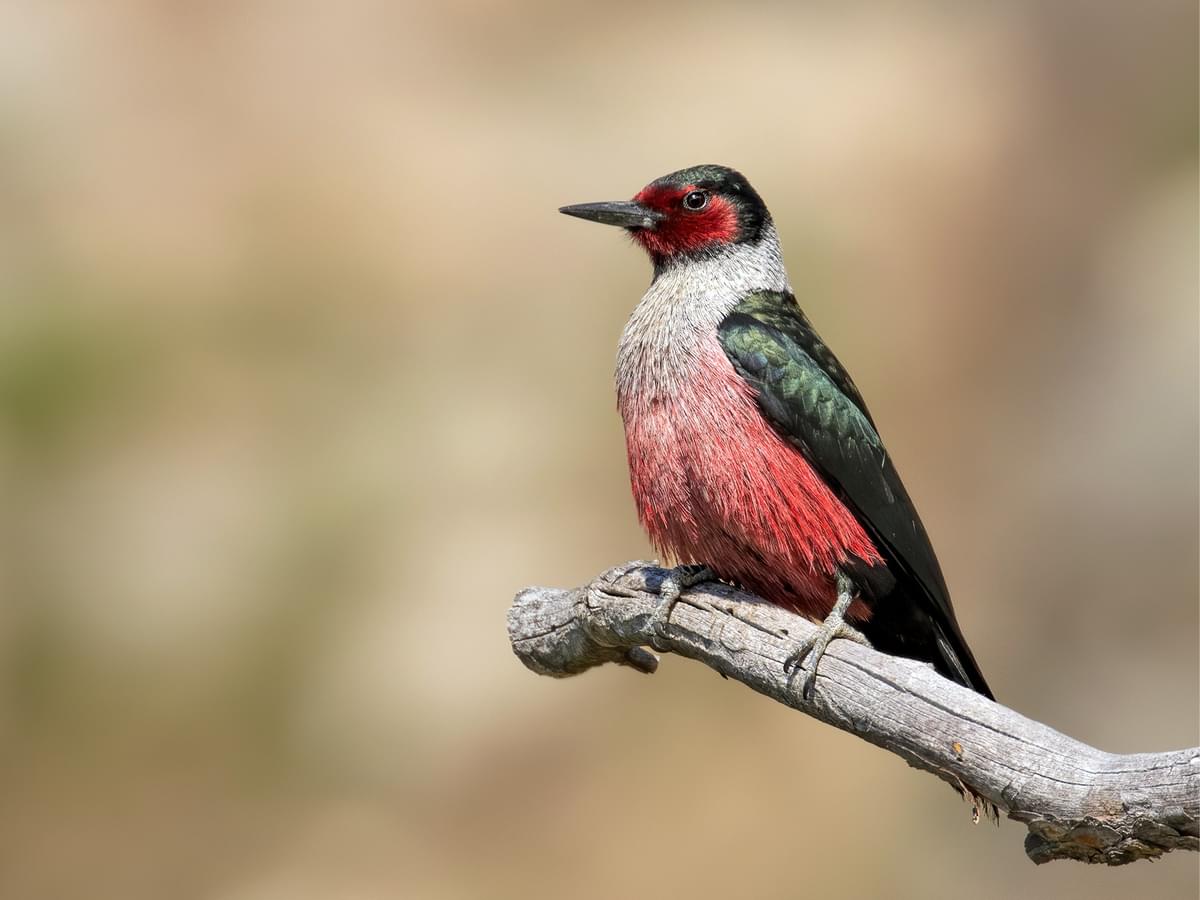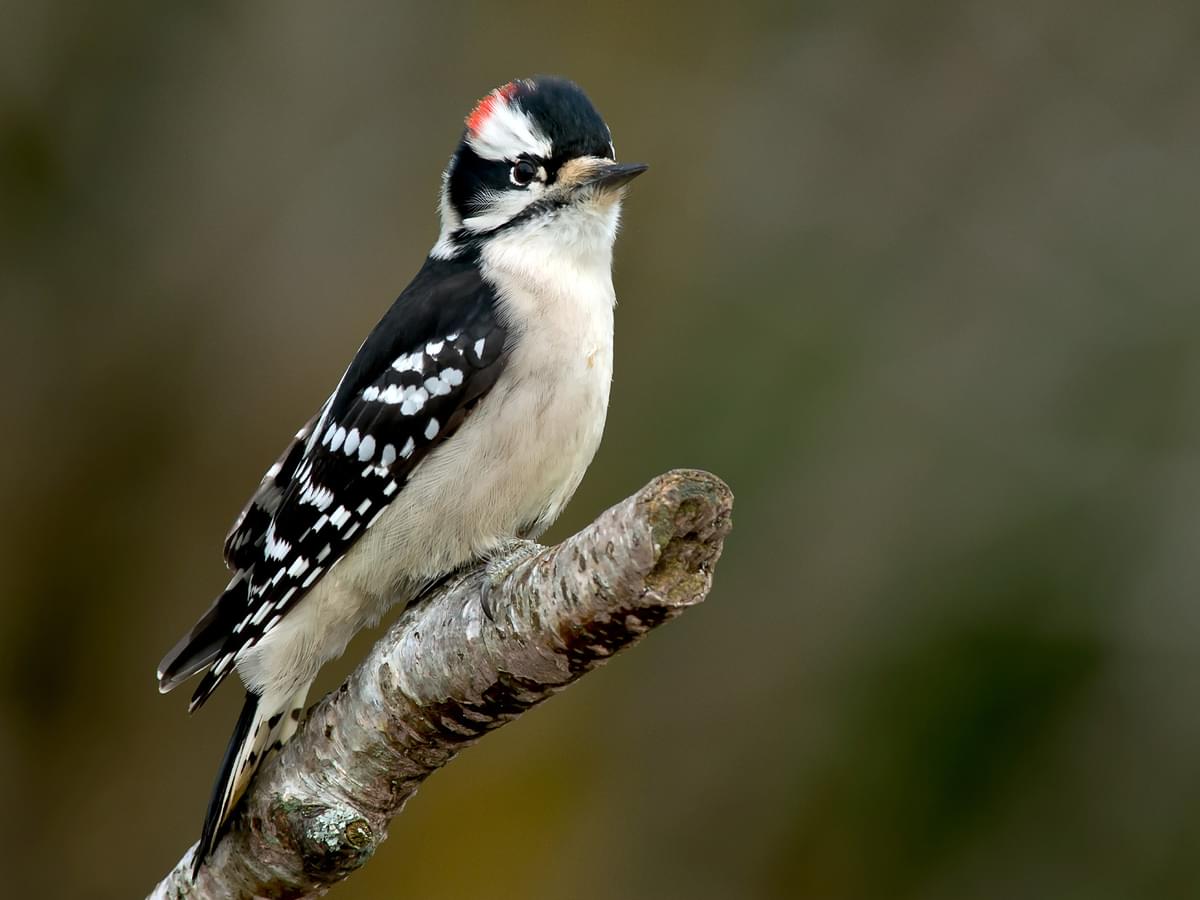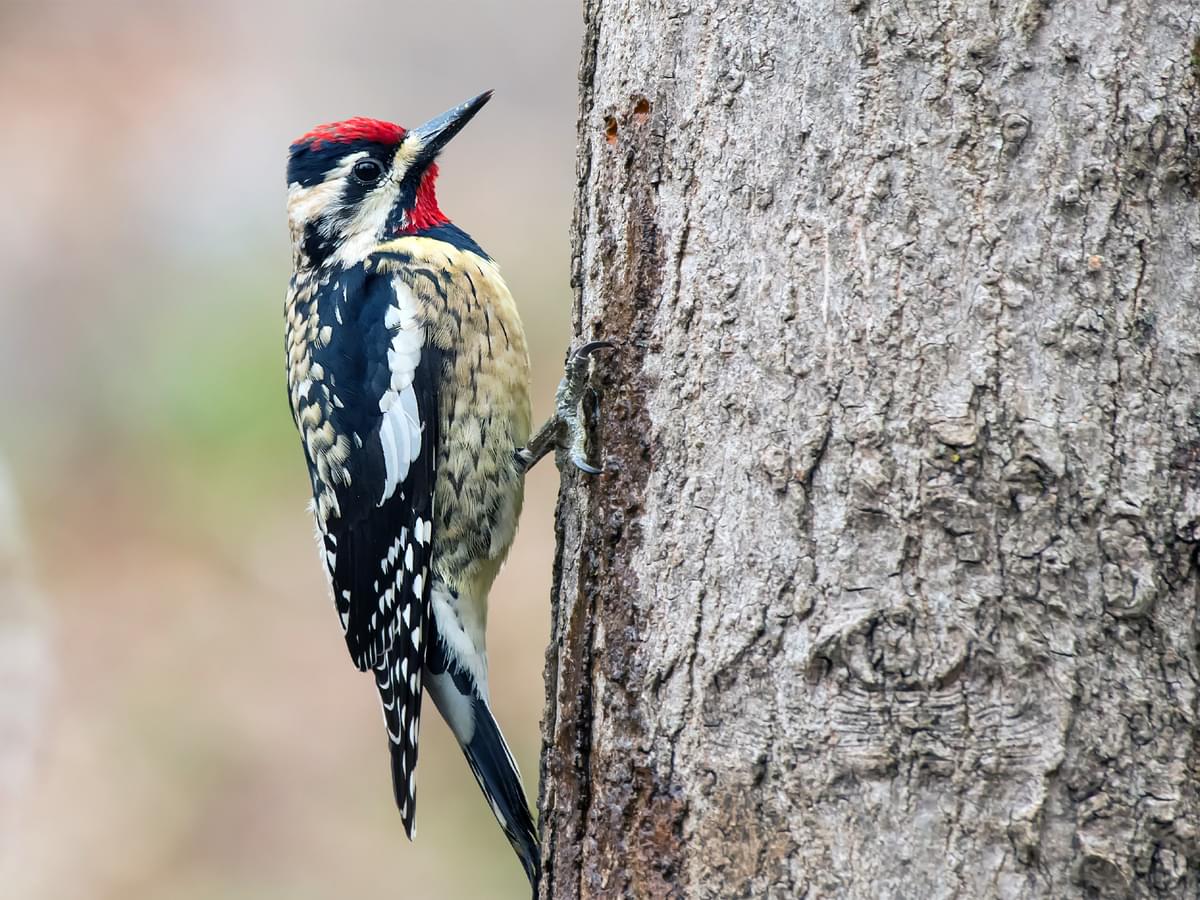With an area stretching 82,277 square miles of mostly plains, Kansas’s mild climate and central location is home to a vast amount of wildlife throughout the state. This includes a variety of birds, including woodpeckers. With so much space and so many species of birds, you may be wondering what woodpeckers are found in Kansas?
Twelve woodpecker species can be spotted in the state of Kansas including the American Three-toed Woodpecker, the Downy woodpecker, the Hairy Woodpecker, the Ladder-backed woodpecker, Lewis’s woodpecker, the Northern Flicker, the Pileated woodpecker, the Red-bellied woodpecker, the Red-headed woodpecker, the Red-naped Sapsucker, Williamson’s Sapsucker, and the Yellow-bellied Sapsucker. Many of these woodpeckers can be spotted year-round, while others are less common, which can be a treat if you spot them!
Keep reading to learn more about the interesting woodpeckers that call Kansas home!
Did you know?
The list of woodpeckers below has been compiled from historical sighting reports from various sources. Whilst some of the birds listed are uncommon and hard to spot, we've still included them as they are sometimes seen still in Kansas.
Lewis's Woodpecker
Melanerpes lewis

Length
26-28cm
Wingspan
49-52cm
Weight
88-138g
Lewis’s Woodpecker
While Lewis’s woodpecker can be spotted all year, they are extremely uncommon around Kansas, but there have been historical sightings. If you are specifically searching for this rare bird, it can be identified by a bulky pink color with a red face that may appear dark depending on the lighting.
With long wings, an elongated body, a long tail, and a long bill, you can find this species perched atop wires, bare branches, and posts, so they can quickly catch flying insects. Their most common habitats include burned forests, ponderosa pine, orchards, farms with scattered trees, and woodlands.
Red-headed Woodpecker
Melanerpes erythrocephalus
Length:
19cm to 23cm
Wingspan:
33cm to 37cm
Weight:
56g to 91g
Seen :
All year, but most common during summer
Red-headed Woodpecker
Believe it or not, the Red-headed woodpecker got its name from its distinctive red head. Measuring around nine inches long, this species boasts a crimson head, neck, chin, throat, and upper breast with glossy blue-black wings, tail, and back. Its underparts, upper tail, and tail feathers are white.
While they can be observed year-round in Kansas, the common time is during the summer when they are hanging out around groves, farms, scattered trees, orchards, and shade trees in towns. They love to drill into trees searching for earthworms, spiders, and ants, but also dine on nuts, fruit, berries, and seeds.
Red-bellied Woodpecker
Melanerpes carolinus
Length:
23cm to 27cm
Wingspan:
33cm to 42cm
Weight:
56g to 91g
Seen :
All year
Red-bellied Woodpecker
The Red-bellied Woodpecker is another interesting species that stores food in trees to prepare for winter. Their diet includes different insect types, small fish, bird eggs, and tree frogs, but most feasting habits include plants like acorns, seeds, fruits, tree sap, and nuts, depending on the season.
If you are searching for the Red-bellied woodpecker, you can find them year-round in wooded areas. Search for their distinct red nape and crown (males) and red nape with a grayish-brown crown (females). All sexes feature a grayish-white belly, white behind, and whitetail and back.
American Three-toed Woodpecker
Picoides dorsalis
Length:
21cm to 23cm
Wingspan:
37cm to 39cm
Weight:
45g to 68g
Seen :
Rare in Kansas, but the best time is summer
American Three-toed Woodpecker
Although rare in Kansas, you may get lucky and spot the American Three-toed woodpecker during the warmer, summer months near bodies of water.
Look for a yellow cap, black and white flanks, a white throat and belly, a single black stripe near the beak, black wings, and a blackhead. This species enjoys eating wood-boring beetle larvae, spruce beetles, tree sap, fruit, and various other insects.
Downy Woodpecker
Dryobates pubescens

Length
14-18cm
Wingspan
25-30cm
Weight
21-28g
Downy Woodpecker
Measured as the smallest woodpecker in North America, the Downy woodpecker also features a distinctive white bar below and above its eyes, black wings and upper area, and a white belly, back, and throat. Similar in appearance to the Hairy Woodpecker, the primary differences are the black spots on white tail feathers and their bill length.
You can find these cute little birds all year in woodland areas of Kansas, primarily in orchards, gardens, and parks where they are searching for their next meal consisting of various insect types.
Ladder-backed Woodpecker
Dryobates scalaris
Length:
16cm to 18cm
Wingspan:
33cm
Weight:
21g to 48g
Seen :
Rare, but all year
Ladder-backed Woodpecker
While they can be observed year-round in Kansas, you will be lucky to spot one. The Ladder-backed Woodpecker is typically only found in the Southwestern corner of the state and not usually seen at feeders. You might detect them eating black oil sunflower seeds, mealworms, or peanut butter if a feeder is near, but don’t count on it!
This species mostly sticks to their nests in dead trees. Once known as Cactus woodpeckers, because they preferred deserts and thorn forests, the Ladder-backed woodpecker has a black and white back that looks like the steps of a ladder. Other features to look for include a red crown, black and white spotted belly, black wings, and a black and white face with a black stripe going down the back of its head.
Hairy Woodpecker
Dryobates villosus
Length:
25cm to 33cm
Wingspan:
38cm
Weight:
43g to 99g
Seen :
All year
Hairy Woodpecker
Most found year-round in deciduous forests across Kansas, the Hairy Woodpecker is a medium-sized version of the Downy woodpecker with males proudly boasting a red patch at the back of their heads.
Their diet is comprised of ants, caterpillars, wood-boring beetle larvae, and other insects. On the vegetarian side, they enjoy berries, nuts, seeds, and sometimes source sap from damaged trees or after Sapsuckers have finished dinner.
Pileated Woodpecker
Dryocopus pileatus
Length:
40cm to 49cm
Wingspan:
66cm to 75cm
Weight:
250g to 350g
Seen :
All year
Pileated Woodpecker
In contrast to the Downy woodpecker, the Pileated woodpecker is the largest in North America and features a red crest on its head. The appropriate name “Pileated” is derived from the Latin word “Pileatus”, which means cap. Other than the red cap, this species is a standard blackbird with a white line down the throat and a large bill. The Pileated woodpecker can boast a wingspan of 26-30-inches and can grow up to 19-inches long.
You can find this bird year-round in or near heavily wooded areas of Kansas; just listen for a “whack-a-wack-a-wack” song. To find ant colonies, they chip rectangular holes in a tree.
Northern Flicker
Colaptes auratus
Length:
28cm to 31cm
Wingspan:
50cm to 55cm
Weight:
120g
Seen :
All year
Northern Flicker
As the most fun and interesting bird to observe on this list, the Northern Flicker loves to swoop across lawns and in trees to search for its prey. This species boasts a long tongue and curved beak, so they can drill into trees, logs, or any piece of wood to find insects.
Available for observation year-round in Kansas, the Northern Flicker is one-foot tall with a brown barred back, and a tan-to-cream belly. The males have a mustache over their bill and both sexes feature a red nap.
Red-naped Sapsucker
Sphyrapicus nuchalis

Length
19-21cm
Wingspan
37-40cm
Weight
32-66g
Red-naped Sapsucker
Although considered more of a western bird that is common to the Rocky Mountains, the Red-naped Sapsucker can be seen in Kansas from April to November, but they are pretty rare.
As a relative of the Yellow-bellied Sapsucker, the Red-naped Sapsucker is identified by its red crown, black and white striped face, red throat, black and white back, and wings, and spotted black and white belly. You can find this species in woodlands, groves, and forests. To find food, they neatly drill holes in tree bark to feed on the oozing sap, insects, and tree tissues.
Yellow-bellied Sapsucker
Sphyrapicus varius

Length
19-22cm
Wingspan
34-40cm
Weight
40-55g
Yellow-bellied Sapsucker
With the best time to spot these majestic birds from mid-September to May, the Yellow-bellied Sapsucker is true to its name and feeds on sap by drilling into trees. Males are defined by their bright red forehead, while females have a paler color.
This species features a yellow combination of color across its chest, belly, and back, hence the first part of their name. Females feature a white patch on their throats, while males have a distinct red version.
Williamson's Sapsucker
Sphyrapicus thyroideus
Length:
21cm to 25cm
Wingspan:
34cm to 40cm
Weight:
44g to 55g
Seen :
Rare, but occasionally spotted in winter
Williamson's Sapsucker
Also found more in the Rocky Mountains, Williamson’s Sapsucker is rare in Kansas but can occasionally, but rarely, be found in winter. You can find them in various types of forests and near dead trees where they nest.
Males are black and white with a red throat and yellow bellies, while females boast a black band across yellow bellies, black and white barred flanks and backs, and a brown head. Like other sapsuckers, their primary source of food is sap, and insects attracted by sap and fruits.
